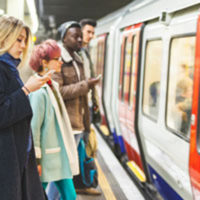Buses and Trains Lack Standard Safety Features
May 9, 2019 Many travelers believe that flying is safer than driving a car. According to the National Transportation Safety Board (NTSB), planes and cars are significantly safer than trains and buses. Recently, they released a report that listed important safety improvements that would benefit train passengers and crews, stating that the current safety standards were inadequate. They also had several recommendations for buses.
Many travelers believe that flying is safer than driving a car. According to the National Transportation Safety Board (NTSB), planes and cars are significantly safer than trains and buses. Recently, they released a report that listed important safety improvements that would benefit train passengers and crews, stating that the current safety standards were inadequate. They also had several recommendations for buses.
In 2017 and 2018, 21 passengers and workers lost their lives in commuter train and Amtrak train accidents, as reported by The Federal Railroad Administration. Thousands more were injured in the past few years on these trains. In December 2017, a passenger riding on an Amtrak train in Washington was thrown out of his seat and severely injured when the train derailed. Two rail cars and the power car fell onto the highway below. The investigation showed that excessive speed caused the crash. The widely reported May 2015 Amtrak crash in Philadelphia killed eight people, and injured 185 after the train derailed.
Two passengers died in a 2016 accident involving a Greyhound bus in San Jose, California, and the state’s Senator questioned why they had not been wearing seat belts. In August of that same year, seven passengers lost their lives and 39 passengers were injured when a truck jackknifed and hit a Greyhound bus in New Mexico. The next year, 44 people died in bus crashes.
Safety Recommendations
Although the NTSB has made train and bus safety recommendations for years, companies are hesitant to respond. Large side windows are one of the main issues as passengers have been ejected through them during crashes. A previous safety board member explained that these windows can pop out during accidents.
In addition to improved window construction, the NTSB recommended more protection for passengers in seating compartments. Current designs do not shield passengers from being hit by luggage, debris, and other passengers. The seats are close together and padded, but this may not help if there is an overturn or derailment. They feel that baggage racks should be built with doors and latches to hold the luggage during a crash.
Other suggestions include lap-shoulder seat belts, although Amtrak claims that research has not shown they significantly contribute to safety. All commercial buses manufactured since 2016 were built with seat belts, although not all passengers wear them.
New Legislation
California became the first state to require bus riders to wear seat belts, and those who do not will face fines. The NTSB supports this law and wants all other states to develop similar laws. They have also been looking into improving bus emergency exit windows, since they have been known to pop out in crashes.
Baltimore Car Accident Lawyers at LeViness, Tolzman & Hamilton Seek Compensation for Train and Bus Accident Victims
If you were involved in a car, train, or bus accident, the experienced Baltimore car accident lawyers at LeViness, Tolzman & Hamilton can help. We will hold the negligent party responsible for your injuries so that you can focus on your recovery. Contact us by calling 800-547-4LAW (4529) or complete an online form for a free consultation today.
Our offices are located in Baltimore, Columbia, Glen Burnie, and Towson, allowing us to represent accident victims in Maryland, including those in Anne Arundel County, Baltimore County, Carroll County, Harford County, Howard County, Montgomery County, Maryland’s Western Counties, Prince George’s County, Queen Anne’s County, Southern Maryland, and the Eastern Shore, as well as the communities of Catonsville, Essex, Halethorpe, Middle River, Rosedale, Gwynn Oak, Brooklandville, Dundalk, Pikesville, Nottingham, Windsor Mill, Lutherville, Timonium, Sparrows Point, Ridgewood, and Elkridge.






